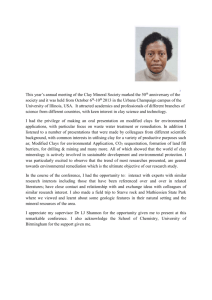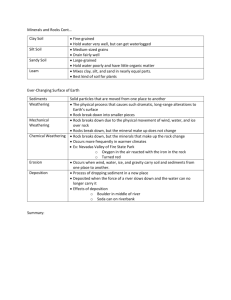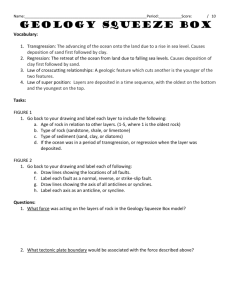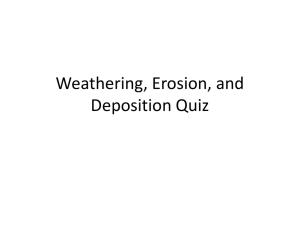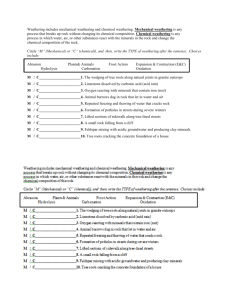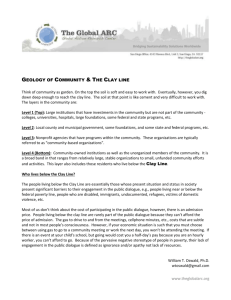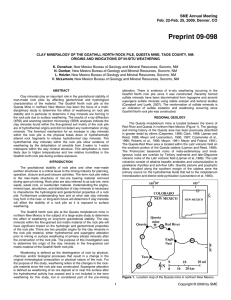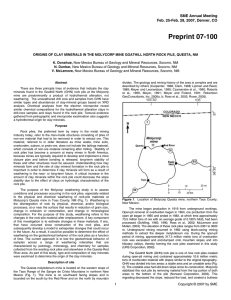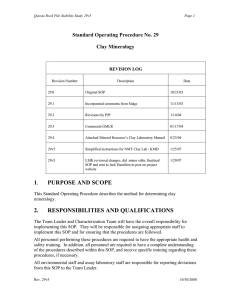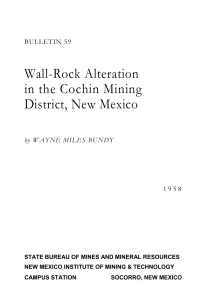clay mineralogy of the goathill north mine rock pile and the goathill
advertisement
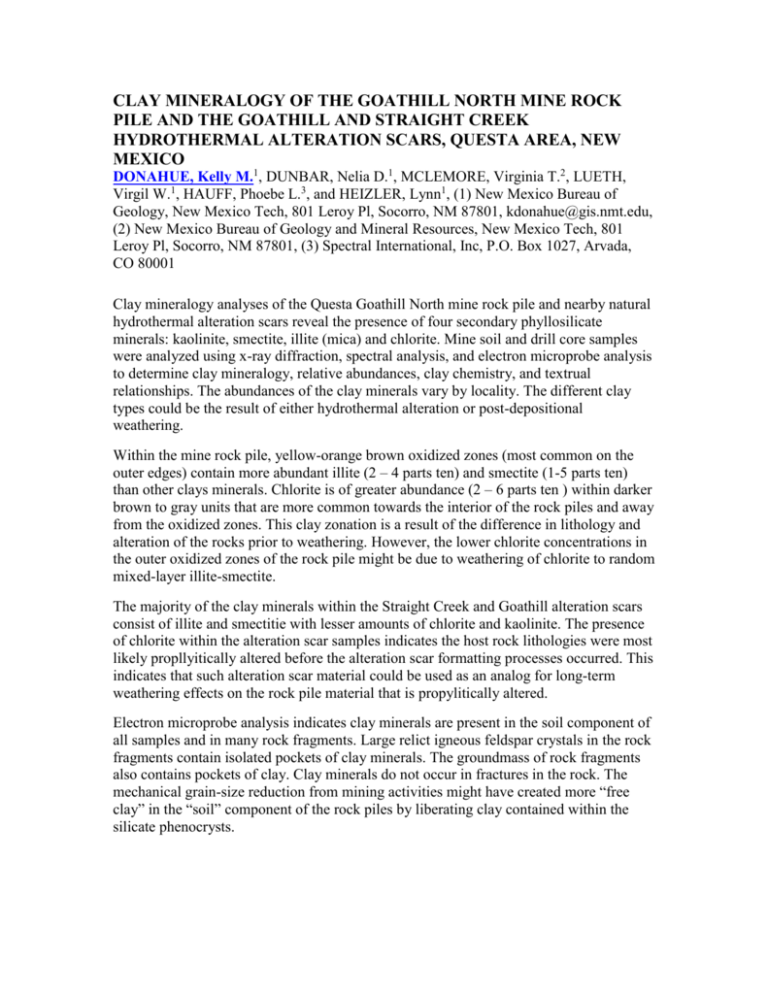
CLAY MINERALOGY OF THE GOATHILL NORTH MINE ROCK PILE AND THE GOATHILL AND STRAIGHT CREEK HYDROTHERMAL ALTERATION SCARS, QUESTA AREA, NEW MEXICO DONAHUE, Kelly M.1, DUNBAR, Nelia D.1, MCLEMORE, Virginia T.2, LUETH, Virgil W.1, HAUFF, Phoebe L.3, and HEIZLER, Lynn1, (1) New Mexico Bureau of Geology, New Mexico Tech, 801 Leroy Pl, Socorro, NM 87801, kdonahue@gis.nmt.edu, (2) New Mexico Bureau of Geology and Mineral Resources, New Mexico Tech, 801 Leroy Pl, Socorro, NM 87801, (3) Spectral International, Inc, P.O. Box 1027, Arvada, CO 80001 Clay mineralogy analyses of the Questa Goathill North mine rock pile and nearby natural hydrothermal alteration scars reveal the presence of four secondary phyllosilicate minerals: kaolinite, smectite, illite (mica) and chlorite. Mine soil and drill core samples were analyzed using x-ray diffraction, spectral analysis, and electron microprobe analysis to determine clay mineralogy, relative abundances, clay chemistry, and textrual relationships. The abundances of the clay minerals vary by locality. The different clay types could be the result of either hydrothermal alteration or post-depositional weathering. Within the mine rock pile, yellow-orange brown oxidized zones (most common on the outer edges) contain more abundant illite (2 – 4 parts ten) and smectite (1-5 parts ten) than other clays minerals. Chlorite is of greater abundance (2 – 6 parts ten ) within darker brown to gray units that are more common towards the interior of the rock piles and away from the oxidized zones. This clay zonation is a result of the difference in lithology and alteration of the rocks prior to weathering. However, the lower chlorite concentrations in the outer oxidized zones of the rock pile might be due to weathering of chlorite to random mixed-layer illite-smectite. The majority of the clay minerals within the Straight Creek and Goathill alteration scars consist of illite and smectitie with lesser amounts of chlorite and kaolinite. The presence of chlorite within the alteration scar samples indicates the host rock lithologies were most likely propllyitically altered before the alteration scar formatting processes occurred. This indicates that such alteration scar material could be used as an analog for long-term weathering effects on the rock pile material that is propylitically altered. Electron microprobe analysis indicates clay minerals are present in the soil component of all samples and in many rock fragments. Large relict igneous feldspar crystals in the rock fragments contain isolated pockets of clay minerals. The groundmass of rock fragments also contains pockets of clay. Clay minerals do not occur in fractures in the rock. The mechanical grain-size reduction from mining activities might have created more “free clay” in the “soil” component of the rock piles by liberating clay contained within the silicate phenocrysts.
